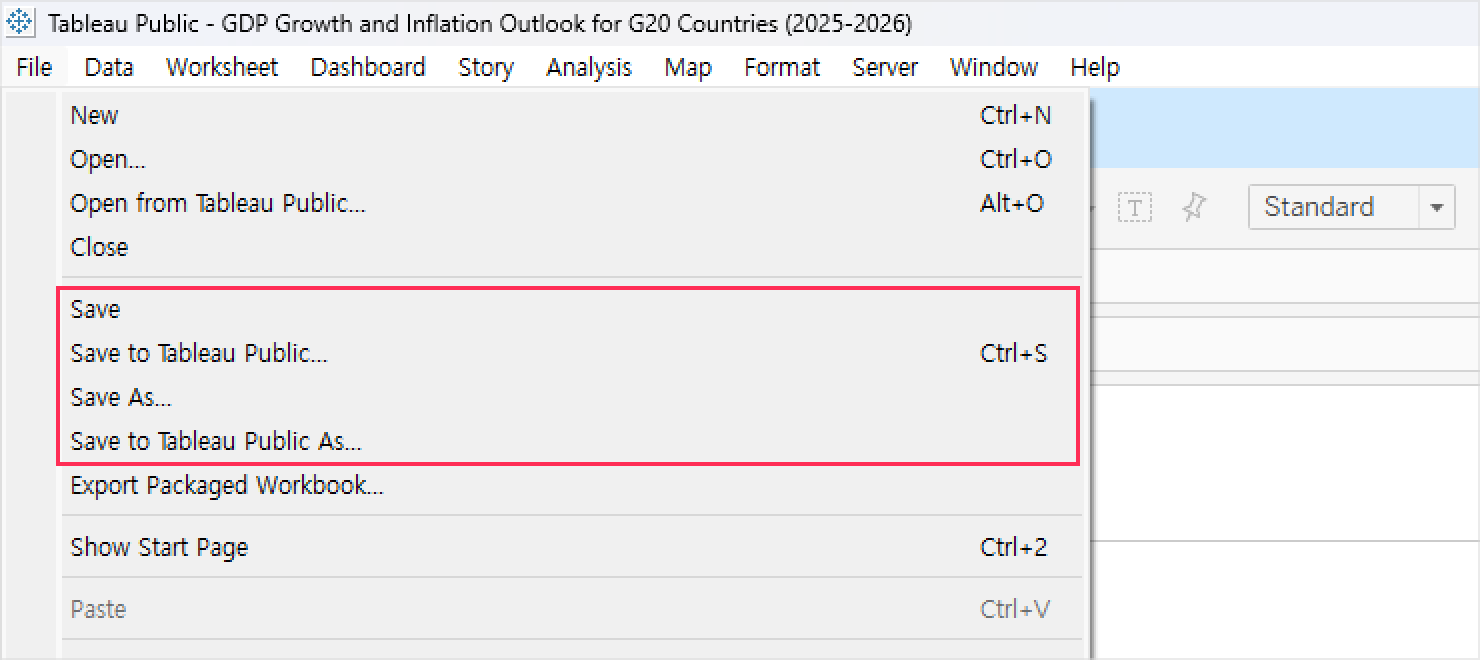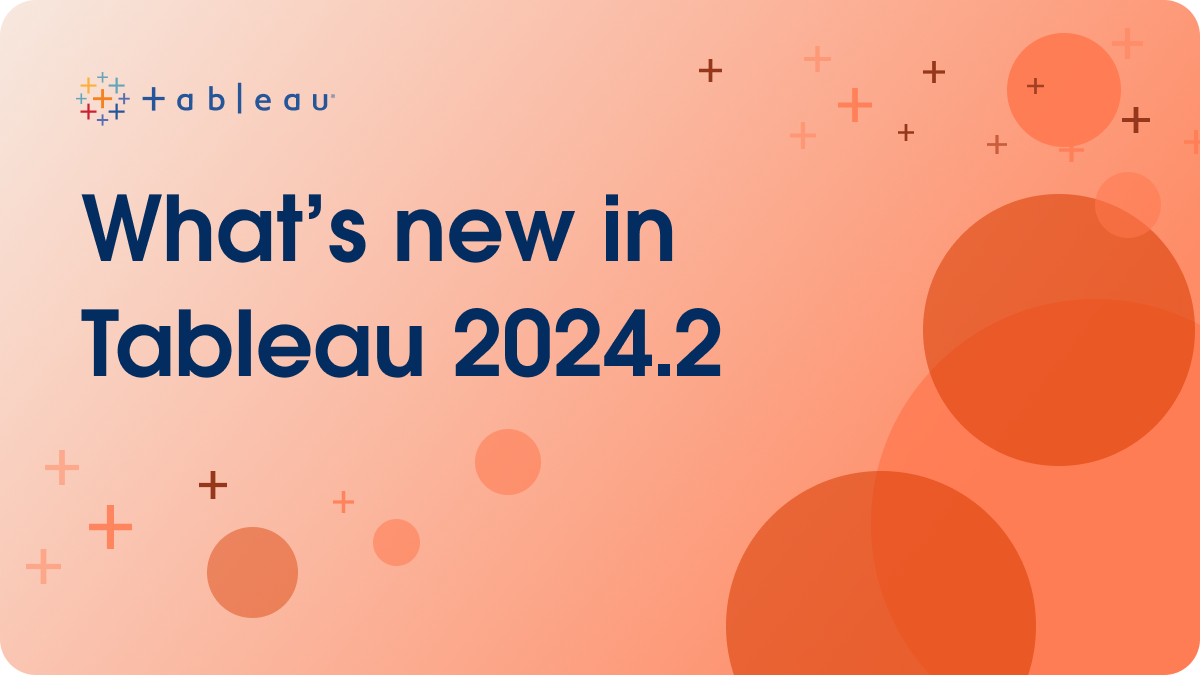Difference between Tableau Public and Tableau Desktop
This article explains the key functional differences between Tableau Public and Tableau Desktop from the perspective of dashboard creation.
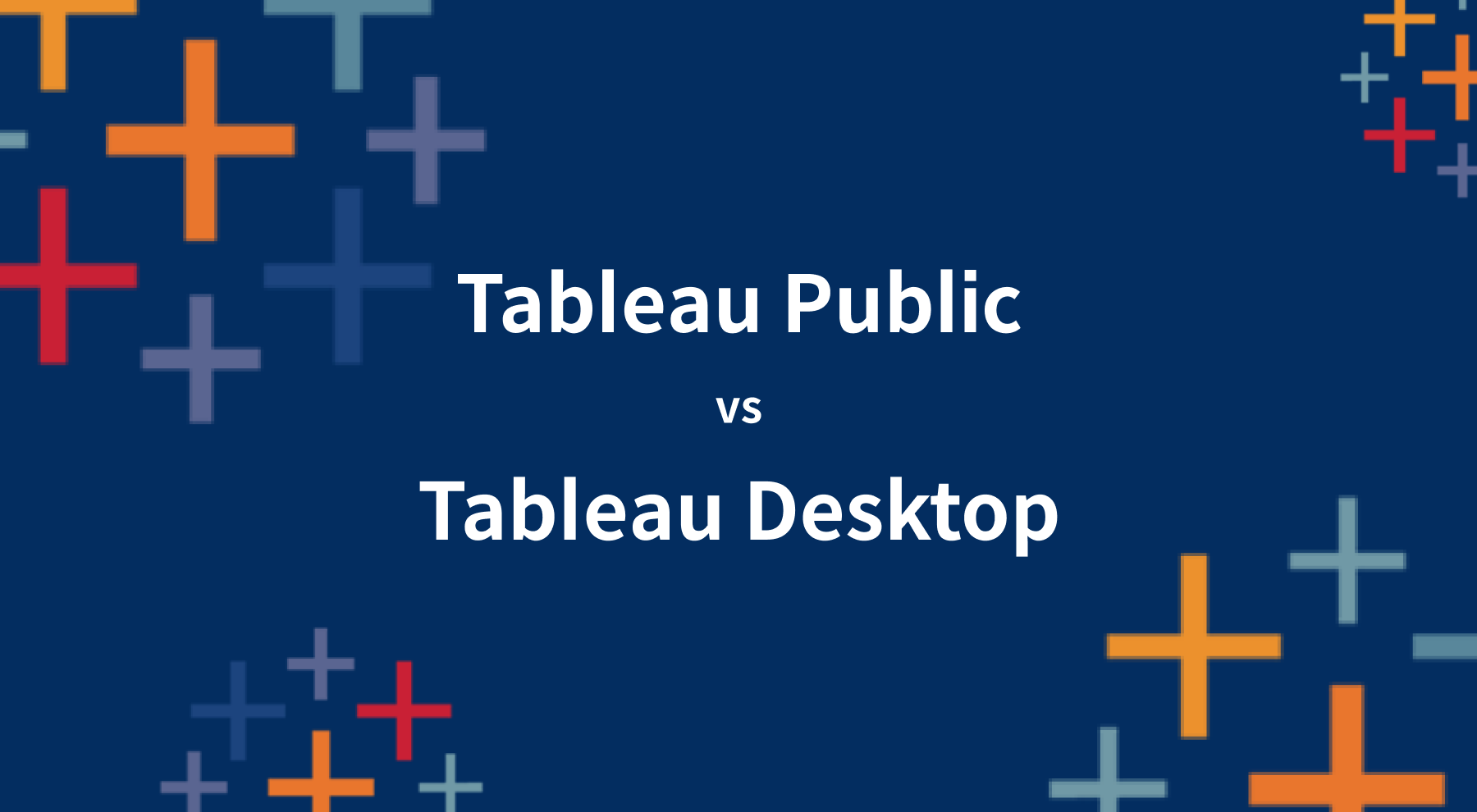
Tableau Public is a free tool, but how does it compare to Tableau Desktop when building dashboards? This article explores the functional limitations of Tableau Public, as well as features that have become less restrictive due to policy changes.
Key differences include:
- Data connection limitations
- Restrictions on copying and exporting sheets and dashboards
- No server connectivity
- Local Save Available
Data Connection Limitations
Tableau Public only supports connections to local data files, Google Drive, OData, and Web Data Connector. If you need to connect to databases, servers, or cloud-based data sources, you’ll need Tableau Desktop.
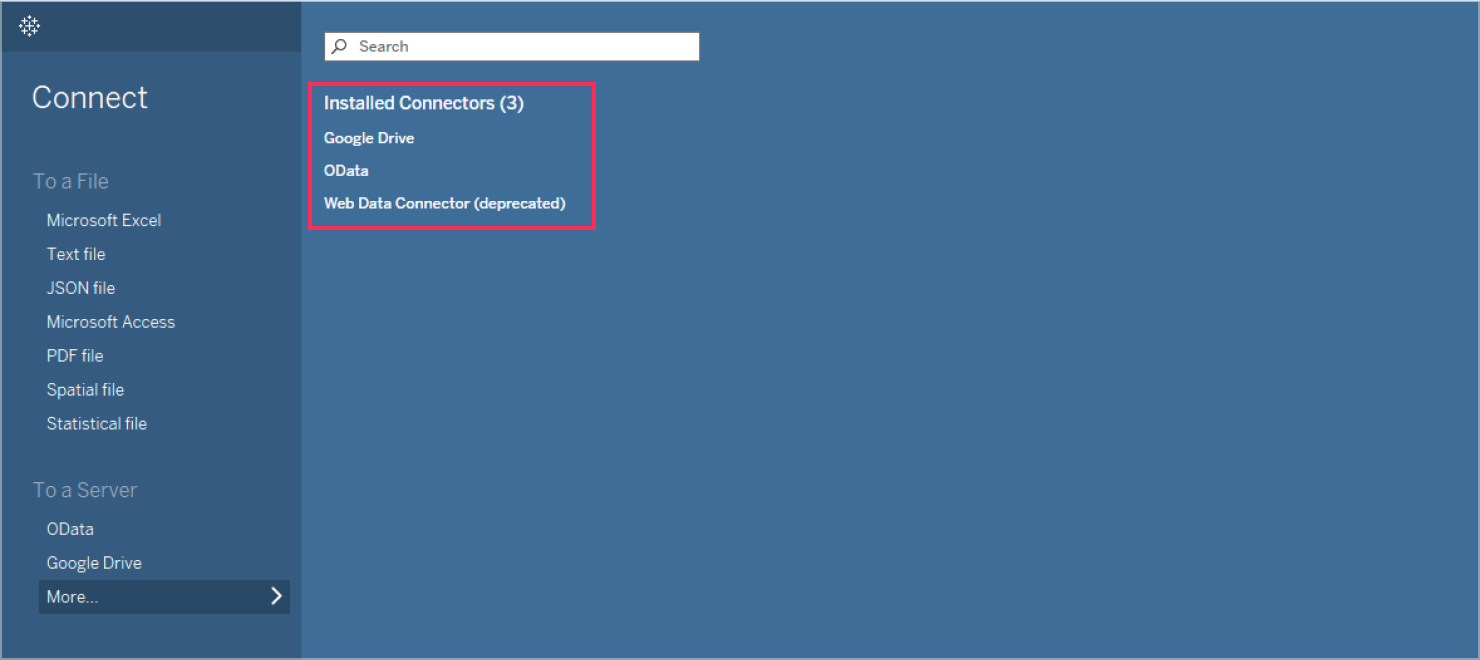
Restrictions on Copying and Exporting Sheets and Dashboards
In Tableau Public, you cannot copy sheets or dashboards for use in other Tableau files. Instead, you must save the file under a different name and modify it directly.
Additionally, exporting data or images from sheets and dashboards is not supported. If you need to export images, you’ll have to use a screen capture tool.
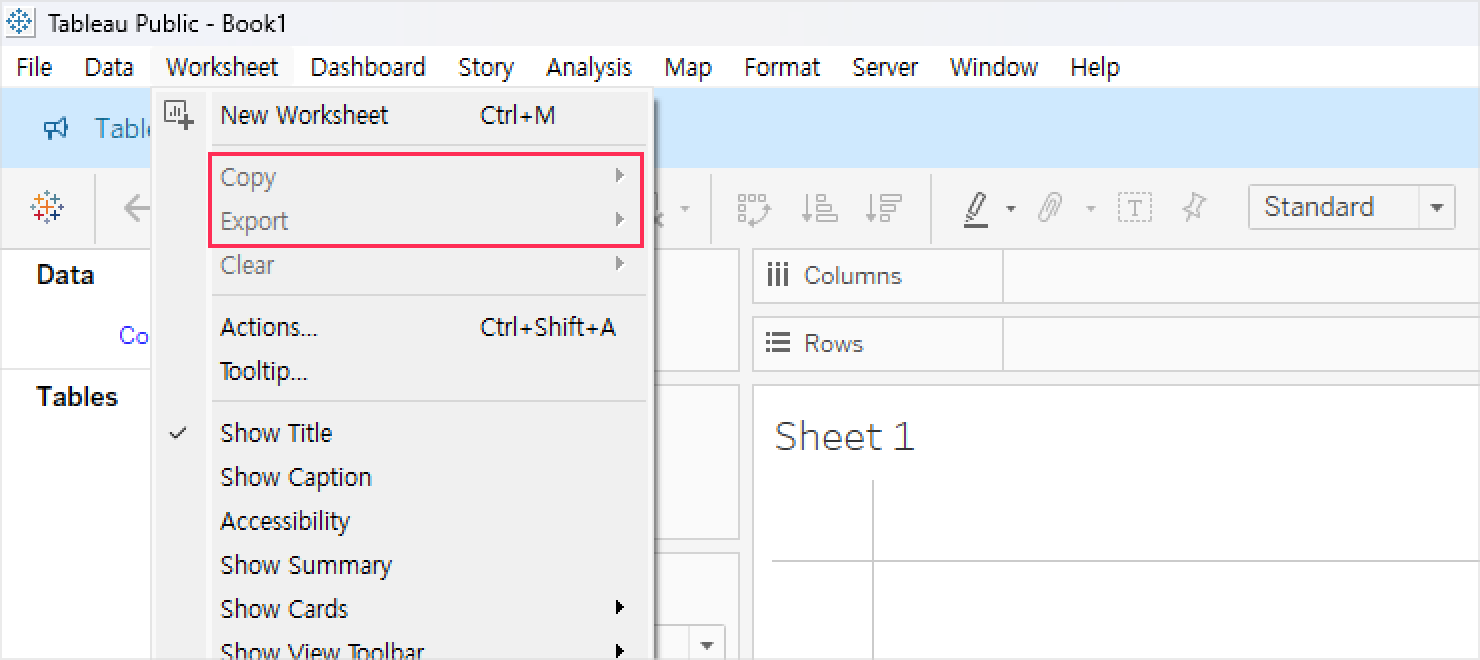
No Server Connectivity
Tableau Public does not support connections to Tableau Server. It only allows publishing to Tableau Public. If your organization uses Tableau Server, you must access it through Tableau Desktop.
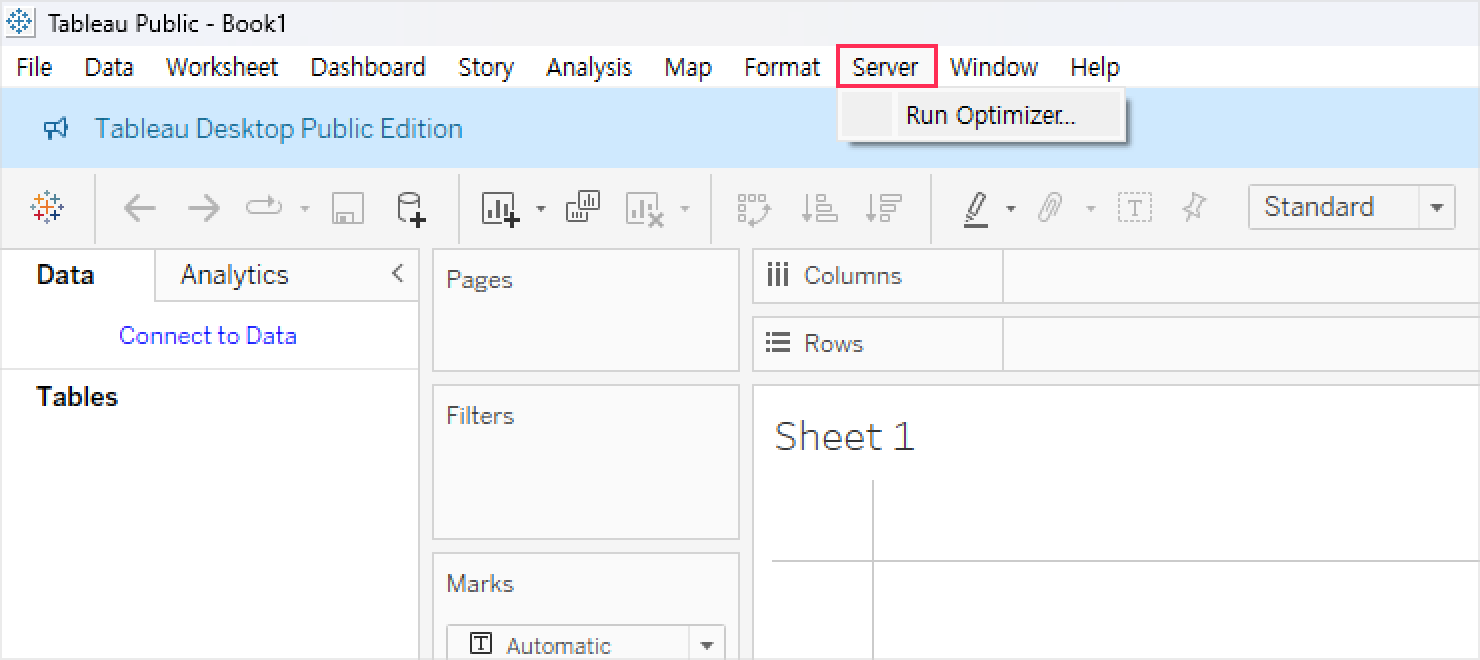
Local Save Available
One of the biggest limitations of Tableau Public was the inability to save files locally. However, starting with version 2024.2, released in June 2024, Tableau introduced local save functionality. Previously, users could only save their work by publishing to Tableau Public, which had a restriction of 15 million rows, making it highly inconvenient. With the addition of local saving, usability has significantly improved.
